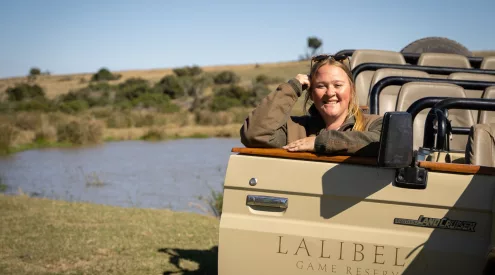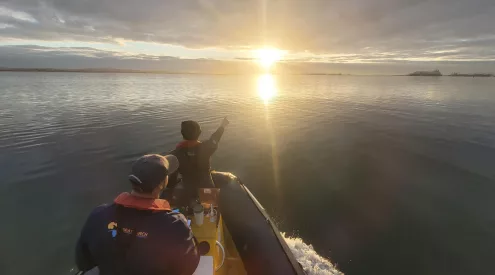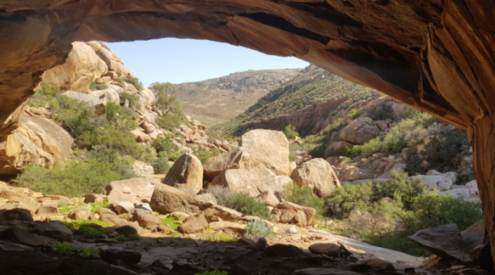Camdeboo … what a lovely name. This national park which surrounds the town of Graaff-Reinet is the second smallest in the country (after Bontebok National Park), but I think it has the most evocative name off all the nature reserves in the country. Park manager, Peter Burdett tells me that the name ‘Camdeboo’ comes from a Khoi word meaning ‘green valley,’ and at first this term may seem incongruous with the usually dry, mauve landscape of the Karoo.
But if you look closely at the slopes on the hills surrounding the town, you’ll see a lot of light-green tinges…these are spekboom, that wonderful succulent plant which grows so proficiently in this part of the world (and especially in the Baviaanskloof where I was last week). For the Khoi people who would have lived here, the relative ‘greenness’ of these plants must have made these arid valleys look particularly lush.
It’s a beautiful landscape, formed over 250 million years ago, when this part of the world was a huge floodplain, fed by massive rivers which flowed from mountains as high as the Himalayas. Over millennia, erosive forces reduced this landscape to what is today known as the Karoo, and is South Africa’s largest landscape form.
Without a doubt, the most impressive part of Camdeboo is the so-called Valley of Desolation, which includes some precipitous basalt cliffs and towers. About 180 million years ago, volcanic eruptions forced molten rock through the sediment, and cooled into hard towers. This is what you see today at the Valley of Desolation.
The park surrounds the beautiful town of Graaff-Reinet almost completely. Well-known South African business tycoon, Anton Rupert, was born here, and was instrumental in raising funds for the purchase of land around the community, to ensure its conservation. Until 2005, the province managed the reserve, until Mr Rupert paid a visit to the then-Minister of Environment, Marthinus van Schalkwyk, and personally asked for the reserve to be proclaimed a national park. ‘Van Schalkwyk couldn’t exactly say no,’ park manager, Peter Burdett told me. Mr Rupert was renowned for making things happen.
The park has a surprising amount of wildlife. Large herds of kudu can be seen coming down off the slopes at the end of the day, while there are also eland, springbok, buffalo and leopard. There are no fences, so it’s not uncommon to see the wildlife crossing the main roads into the town. Peter told me that a large male kudu once made its way onto the second-floor of a building in the middle of town! There was a parquet floor, and it kept slipping, preventing it from getting up. The park staff had to carry it down the stairs, out of the building and take it back into the veld.
Camdeboo forms just a portion of a large amount of conserved land in this part of the world. Between Graaff-Reinet and Cradock (where the Mountain Zebra National Park is situated), there are many private wildlife reserves, and conditions are ripe for the formation of a mega reserve concept.
The Karoo is an interesting place to me, personally. At first I find it foreboding and quite intimidating, but after a while, it softens and I soften too. I’m still constantly amazed at the range of landscapes in South Africa, and the relatively short distances that it takes to go from one to the other.
A big thanks to my Dad who came up to spend a few days with me…all the time alone on the road can take its toll, and it was great to have my Dad with me. Thanks Dad!
For more, go to www.yearinthewild.com and www.facebook.com/yearinthewild. Thanks again to my sponsors for making it all possible. CapeNature, South African National Parks, Ezemvelo KZN Wildlife, Eastern Cape Parks, iSimangaliso Wetland Park, Ford, Total, Evosat, Conqueror Trailers, Vodacom, Digicape, Lacie, Frontrunner, Safari Centre Cape Town, K-Way, EeziAwn, National Luna, Nokia , Garmin, Goodyear, Global Fleet Sales, Hetzner, Clearstream Consulting, Escape Gear and Trailcam Adventures.

















